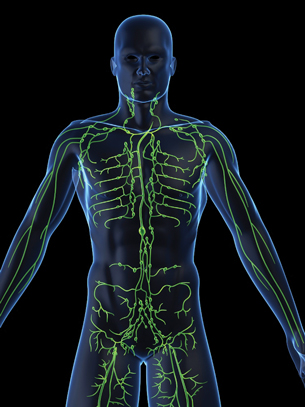Module 8 Intro
1. Module 8 Intro
1.31. Page 2
Module 8—Circulation, Immunity, and Excretion
 Explore
Explore
 Watch and Listen
Watch and Listen
The following video “The Immune System: Your Magic Doctor” describes the function of the immune system by
- listing the major parts of the system
- describing the mechanical barriers to infection
- primary response by macrophages
- action of antibodies
- differences between viral and bacterial infections
- role of suppressor T-cells and memory cells after an infection has been cleared up
Allergic reactions, autoimmune diseases, mutations, cancer, immunodeficiency, and vaccination also are described.
 Self-Check
Self-Check
SC 1. What is your body’s first line of defence?
SC 2. What does the body refer to as “your magic doctor”?
SC 3. Where are B-cells and T-cells stored?
SC 4. What do macrophages do?
SC 5. What can damage macrophages?
SC 6. What do helper T-cells do?
SC 7. What do B-cells do?
SC 8. What do antibodies do?
SC 9. Why are viruses a “sneaky” invader and hard to get rid of?
SC 10. What do killer, suppressor, and memory T-cells do?
SC 11. What is an allergic reaction?
SC 12. What is it called when the immune system attacks healthy cells?
SC 13. Give an example where the immune system may fail.
SC 14. How does HIV interfere with the immune system?
SC 15. How does immunization work?
SC 16. What are symptoms of infection?
SC 17. Why does exercise help the immune system?
 Self-Check Answers
Self-Check Answers
SC 1. The body’s first line of defence is the skin, coughing, sneezing, vomiting, cilia/hairs that trap particles, eyelashes, eyelids, mucus in the nose and mouth, and tears.
SC 2. Your magic doctor is your immune system.
SC 3. B-cells are stored in lymph nodes, while T-cells are stored in glands near the heart called thymus glands.
SC 4. Macrophages engulf and digest invading bacteria.
SC 5. Macrophages can be damaged by invading pathogens or smoking.
SC 6. Helper T-cells identify antigens on invading pathogens and send messages to B-cells.
SC 7. B-cells begin producing antibodies specific to the invading antigen.
SC 8. Antibodies attach themselves to the antigens of the invaders. This marks and/or neutralizes the invader and the invader is unable to resist attack by macrophages and other white blood cells.
SC 9. Viruses take over regular cells and are able to multiply and destroy the regular cells in the process.
SC 10. Killer T-cells kill host cells containing viruses and the virus itself. Suppressor T-cells make sure that once the viruses are killed, the killer T-cells don’t harm healthy cells. Memory T-cells remember the type of invader antigens so that the immune system can respond faster.
SC 11. An allergic reaction is when the body views a harmless substance like food or pollen as a foreign invader and attacks the pathogen. An allergic reaction may cause symptoms like swelling, sneezing, or itching.
SC 12. When the immune system attacks healthy cells, it is called an autoimmune disease.
SC 13. The immune system may fail to recognize some viruses or cancer cells.
SC 14. HIV interferes with the immune system by killing helper T-cells.
SC 15. A similar virus is injected into the body. Antibodies are produced to kill this virus and memory T-cells remember the antigen, so an immune response can happen when a virus invades the body again.
SC 16. Symptoms of infection are redness, swelling, pus, swollen lymph nodes, fever, and pain.
SC 17. Exercise helps the body to use nutrients properly and reduces stress.
The Lymphatic System

© Sebastian Kaulitzki/shutterstock
If asked to comment on the circulatory system, you could probably, without difficulty, describe its anatomy and list a number of roles that the circulatory system performs. When asked a similar question about the structure and function of the lymphatic circulatory system (or simply the lymphatic system), you may be less familiar with the anatomy. The lymphatic circulatory system is a network of vessels with associated glands or nodes that extends throughout the body.
You might not think about the lymphatic system until you are sick. Swollen lymph nodes under the jaw or armpits can be painful and cause concern. This system plays a critical role in the maintenance of the body’s fluid and osmotic balance. The lymphatic system is much like the venous portion of the circulatory system. It is a network of one-way vessels that collects the fluid that “leaks” from the capillaries into the interstitial (or extracellular) space between cells.
You may access an animation describing the lymph nodes by doing a web search. Use the keywords “how stuff works lymph nodes.”
 Read
Read
Continue learning about the lymphatic system by reading pages 292 and 293 of the textbook. Pay close attention to the diagrams to see the relationship between the circulatory system and the lymphatic system.
 Self-Check
Self-Check
SC 18. How is the lymphatic system related to the circulatory system?
SC 19. How does the lymphatic system help to protect the body from infection?
 Self-Check Answers
Self-Check Answers
SC 18. Lymph vessels are closely associated with the capillaries of the cardiovascular system. Fluid that escapes from the cardiovascular capillaries forms part of the interstitial fluid. Some of this fluid is collected in the lymphatic capillaries and is eventually returned to the blood.
SC 19. The lymphatic system also works with the white blood cells to protect the body against infection. White blood cells called lymphocytes mature in the lymph nodes, which are the glands found throughout the lymphatic system. The lymph nodes also contain macrophages, which trap and destroy bacteria that are circulating within the body.